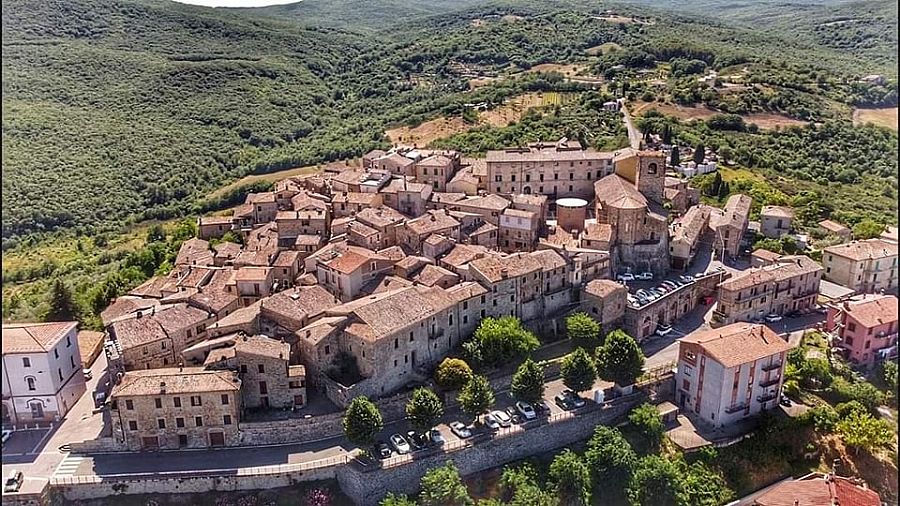Acquapendente

Acquapendente is a lovely town located right at the border of Tuscany, Lazio and Umbria. Its name describes some of the natural beauty to be found here - "falling water" because of the rivers and lakes that surround it. Here you'll find green rolling hills, valleys and lakes, along with rivers that have little waterfalls. Lake Bolsena and Lago di San Casciano are nearby, as is the nature reserve called Monte Rufeno. In short, there are plenty of places to go for a walk in the countryside and woods, or along lakeshores.
There are about 5700 proud Acqusiani as the inhabitants are called, who preserve some nice buildings and historic traditions. First settled by Etruscans, then Romans, it was sacked and taken by the Longobards. In the Middle Ages it was established as a village and monastery by the Benedictine order because of its position on the Via Francigena, the ancient road that lead from Rome to France. Pilgrims and crusaders stopped here. The town became known as the "Jerusalem of Europe" because of its cathedral dedicated to the Holy Sepulchre. The Romanesque structure has a beautiful crypt dating to the 1100s with 24 columns, each topped with different carved capitals arranged in a special way below the cross-vaulted arches they support. In the middle is a reliquary that is a model of the Holy Sepulchre and contains fragments of stone said to come from that sacred tomb.
The church of San Francesco was originally dedicated to Santa Maria and built in Gothic style, but was renamed for St. Francis sometime after his death, and redone in more flamboyant style in 1747. It has a pretty Renaissance era bell tower. The city gates are still intact though the protective walls have been torn down. Porta della Ripa and Porta San Leonardo are two, but the more romantic is called Torre Julia de Jacopo, named for a maiden heroine who was able to stave off eneny fire and close the gate against invaders in the 1500s. Don't miss the castle-capped village of Torre Alfina, administratively part of Acquapendente, just a few miles away.
Acquapendente also maintains a long tradition every May called the Pugnaloni. The festival goes back to the 1100s when the townspeople rebelled against the tyranny of Frederick I Barbarossa (called Red Beard). Two farmers came across a miraculously flowering dead cherry tree and took it as a sign from the Madonna del Fiore, the town's protector saint, to rise up and seek liberty from tyranny. They did so, and started a procession to give thanks and honor to her. Great masterpieces are created using flower petals and leaves and displayed all over town, symbolic to the Madonna of the Flowers and nature itself. The beautiful artworks follow a theme of liberty, nature and religious freedom, and the festa includes a parade, flag throwers and a religious procession, as well. It is held on the feast of the Madonna del Fiore, the third Sunday of May.
Acquapendente is in an enviable position, right on the border of Lazio and Tuscany, with Umbria's art city of Orvieto just a few miles away. It is near Lago di Bolsena, Pitigliano, Cetona and San Casciano dei Bagni.
Have a look at our holiday homes in Acquapendente.

 Amalfi Coast
Amalfi Coast Sorrento Coast
Sorrento Coast Tuscany
Tuscany Cilento National Park
Cilento National Park Lake Como
Lake Como Rome and Latium
Rome and Latium Umbria
Umbria Capri and Ischia
Capri and Ischia Venice
Venice Puglia (Apulia)
Puglia (Apulia) Liguria
Liguria Sicily
Sicily Lake Maggiore
Lake Maggiore Lombardy
Lombardy Sardinia
Sardinia Lake Garda
Lake Garda Abruzzo and Marche
Abruzzo and Marche Calabria
Calabria

